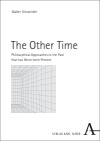Zusammenfassung
Der Mensch ist das einzige Lebewesen, das sich zum Ganzen und den Grenzen seines Daseins zu verhalten vermag. Im Philosophieren versucht er zu ergründen, warum dies so ist. Dabei stößt er auf einen Topos, der nicht nur das Fragen nach Wahrheit und Existenz miteinander verknüpft, sondern auch die unterschiedlichsten Formen symbolischen Weltzugangs: Mythos und dichterische Erzählung, wissenschaftliches und künstlerisches Weltbild, religiösen und politischen Machtanspruch. Dieser Topos ist die Zeit jenseits der Zeit, die andere, die verlorene, die gewendete Zeit: die Vergangenheit, die niemals Gegenwart war. Das zeitgenössische Denken hat sich diesem Topos aus verschiedenen Richtungen genähert, deren inneren Zusammenhang dieses Buch aufweist.
Abstract
Man is the only living being who is able to relate to the whole and the limits of his existence. In philoso-phising, he faces the question of the reasons why this is possible. This leads us to a topos that links not only the question of truth and existence, but also the most diverse forms of symbolic access to the world: myth and poetic narratives, scientific and artistic world views, and religious and political claims to power. This topos is the time beyond time, the other, the lost, the turned time: the past that has never been present. Phenomenological, hermeneutic, analytical and semiotic approaches have interpreted this topos in different ways. Their inner bond is explored in the essays presented in this book.
Schlagworte
Analytik analytics existence Existenz Hermeneutik hermeneutics Mensch man myth Mythos Phänomenologie phenomenology philosophy Philosophie poetic narrative poetische Erzählung politics Politik Religion religion Semiotik semiotics symbolism Symbolik time Topos topos Wahrheit Weltbilder truth Zeit worldviews- Kapitel Ausklappen | EinklappenSeiten
- 11–66 Introduction 11–66
- 95–108 Fulfilled Presence 95–108
- 109–140 Thinking is Time 109–140
- 181–194 The Mirror of Time 181–194
- 195–206 Time’s Redeeming Urgency 195–206
- 209–246 3. Religious Horizons 209–246
- 247–254 Bibliography 247–254
- 255–256 Sources 255–256
- 257–258 List of Names 257–258
- 259–262 Index 259–262

